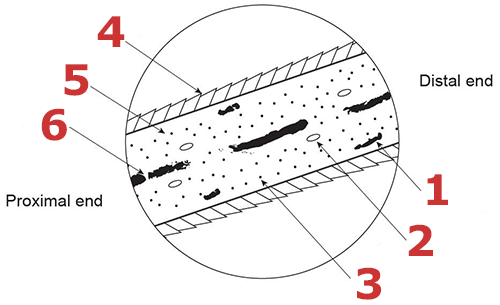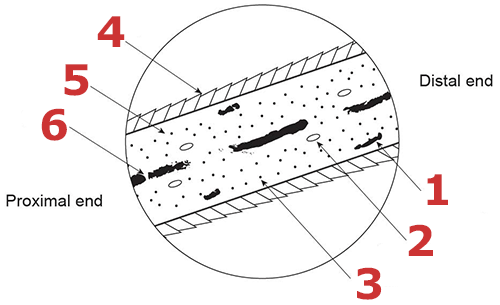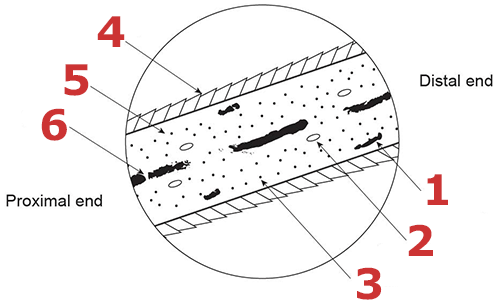forensic science - hair analysis
1/42
There's no tags or description
Looks like no tags are added yet.
Name | Mastery | Learn | Test | Matching | Spaced |
|---|
No study sessions yet.
43 Terms
comparison microscope
compound microscope that allows side by side comparison of samples, such as hair
cortex
region of hair located outside the medulla that contains granules of pigment
cuticle
tough outer covering of hair thats composed of overlapping scales
gas chromatography
method of seperating chemicals to establish their quantities
hair follicle
activley growing part of hair that contains DNA and living cells
hair shaft
part if hair follicle that contains mitochondrial DNA
Isotope
different forms of an element that differ in atomic mass and number of nuetrons
isotope signiture
aka isotope fingerprint, is a ratio of different isotopes found in an individuals
isotope ratio mass spectometry (IRMS)
technology that allows examiners to analyze ratios of isotopes of oxygen, hydrogen, carbon, nitrogen, and sulfur
keratin
type of tiberous protein that makes up majority of the cortex of a hair
medulla
central core of a hair
melanin granules
particles of pigment found in the cortex of a hair
mitochondrial DNA
genetic material in mitochondrial of cyptoplasm of a cell, only inherited from mom
nuclear DNA
genetic material in a nucleus of cell
nuetron activation analysis (NAA)
a process that relies on determining concdentrations of elements in materials by creating radioactive decay paths that can be identified and used to date
Explain why hair is a valuable source of evidence (characteristics)
adheres to many surfeces, easily transfers to a victim or crime scene, tough outer coating, provides class evidence
Explain why hair is a valuable source of evidence (source of DNA)
hair with follice/root contains nuclear DNA and provides individual evidence, hair without follicle contains mitochondrial DNA and reveals family relationships
Explain why hair is a valuable source of evidence (chemical testing)
gas chromatography, isotope ratio analysis (cannot determine when hair was left)
1800s
regognize importance of hair as trace evidence
1900s
study published in france, 1st use of comparison microscope
2000s
(OSAC, NIST, POJ), greater training for technicians, equipment certification, no convictions soley on hair analysis, innocence project
functions of hair
regulates body temp, decreases friction, protects skin from sunlight
follicle
papilla (area containing capillaries), contains DNA and blood vessels
Hair Shaft
nongrowing part of hair, contains mitochonfrial DNA

4
cuticle

5
cortex

6
medulla
anagen stage
1,000 days (80-90% of hair)
catagen stage
hair stops growing, follicle recedes due to blood supply(2% of hair)
telogen stage
dormant hairs that are lost (10-18% of hair)
types of hair
varies in shape, length, diameter, texture, and color
kinds of hair
head, eyebrows, eyelashes, beard, mustach, underarm, pubic, body
treated hair
bleaching, dyeing, determinign PMI
ethnic differences
key physical characters (european, asian, african)
differences between nonhuman and human hair
human hair is usually 1 color along entire lenth, ratio of diameter of medulla to diameter of entire hair is medullary index, human scales are flattened and narrow
how to properly collect attached hair
leave hair intact, diagram and note exact location, photograph hair, package clothing w hair (if dry)
how to properly collect unattached hair
photograph in situ, use clean forceps, place hair in small box or vial, once in lab hair may be removed
microscopic analysis
low power compound, phase contrast microscopy, flouresence
macroscpoic analysis
seen w naked eye
chemical analysis
anything ingested/ ansorbed through skin, hair does not readily decompose, can establish a timeline
DNA analysis
hair containing follicle or root, individual evidence can be obtained
nuetron activation analysis (NAA)
creates radioactive decay paths
protein analysis
provides individual analysis